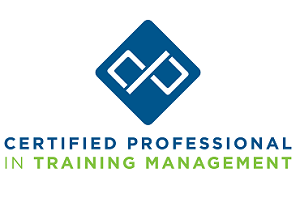Your education and professional experiences have helped give you some of the key tools to be a great trainer. Yet, it’s important to recognize that relying on these alone is unlikely to result in much career growth or an enriching professional journey. Among the ways you can become a more effective, knowledgeable, and satisfied trainer is to build your network.
It may be the case that you’ve already gained some useful contacts in your local area. This is great, but you can certainly benefit from having a more global mindset. Engaging in online networking gives you access to support, training knowledge and career opportunities across a range of cultures. By taking the time to explore how you can effectively navigate global networks, you can truly grow your career.
Finding Sources of Knowledge
When you first set out on a global networking journey, it’s often difficult to know where you should focus your efforts. You have a finite amount of time at your disposal, after all. As a training professional, often the best route is identifying global network members who could be effective sources of knowledge. In training, knowledge is king. Knowledgeable network members’ insights can help you thrive in your current role, grow as a professional, and access new opportunities.
Who can be good sources of knowledge? Some options could include:
- Professionals with expertise in specific types of training pedagogy you are interested in pursuing.
- Other trainers in your industry with a greater understanding of the challenges and solutions to achieving effective staff education.
- Global peers you can mutually share stage-of-career insights and new opportunities with.
- Mentors that can help you plan and pursue your individual training career path.
Where can you find such partners across the globe? Social media is a great way to network with learning professionals from all over the world. After all, professionals often use social platforms to post about their areas of expertise, their thoughts on industry changes and so forth. You can search for terms related to the areas of training knowledge you want to connect with people about. Use professional platforms, like LinkedIn, for finding dedicated training professional groups. But also look on other social media platforms, like X and Instagram, as there will be global influencers posting about your industry alongside other potential professional connections responding in the comments sections.
Additionally, you can attend training-related virtual webinars, seminars and conferences. Doing so can help you connect with training professionals who share similar interests to you and of various levels of experience and expertise. Participate in the breakout sessions to talk to others about your interests and identify those who seem receptive to learning and networking.
Communicating Effectively With Your Global Network
Communicating effectively with your global network members is the key to your growth. This begins with understanding how to facilitate meaningful connections online when you first reach out to potential network partners. Wherever possible, research each potential contact’s background and training interests, so you can personalize your outreach in a way that shows you care about their experiences. Be mindful of your professional image as well. The profile picture on your social media profiles may well be a contact’s first impression of you, so make certain it communicates an accurate depiction of your professionalism.
Once you’ve started to have conversations that mark the beginning of a networking relationship, it’s worth agreeing on how to progress. Discuss your mutual goals, so you both have a clearer idea of how best to help one another. It’s also helpful to decide on methods of communication that work for you both, whether this is through regular video calls or occasional email check-ins.
Particularly when networking with global training professionals, you should demonstrate a level of cultural sensitivity and awareness in your communications. Different nations have cultural nuances that can impact the approach each takes to a professional relationship. Some colloquialisms you use may be interpreted too literally while friendly gestures may have a different meaning to your intentions. Learning about your network members’ cultural backgrounds not only boosts your relationship but can also help you provide better and more inclusive training to global learners.
Engaging in Collaborative Projects
Networking globally as a training professional isn’t just about finding people who can get you the next rung up the professional ladder. There are also opportunities to collaborate on projects that are mutually beneficial. These experiences develop your knowledge, highlight your professional skills, and strengthen your relationships.
Some examples of collaborations include:
- Building innovative curriculums in mutual areas of interest.
- Developing training frameworks for people of diverse learning preferences.
- Reviewing one another’s training materials for efficacy and clarity.
When collaborating with globally dispersed peers, it’s important to ensure you’re using effective tools. For instance, using cloud document services enables you to easily share and edit curriculum project materials. Virtual whiteboards can also be good for brainstorming over long distances. The smoother you can make collaborations, the greater potential for positive career outcomes.
Conclusion
Navigating global networks effectively can be a key to a more enriching training career. It can involve seeking network members based on their potential as sources of knowledge and using effective global communication approaches, among other methods. Amidst striving for career opportunities, be sure not to overlook that some of these network partners can develop into genuine friendships. By being open to real connections, it’s not just your professional life that will thrive but also your personal well-being.




